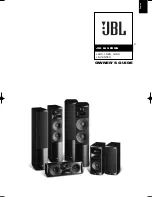
Fault
Cause
Remedy
Por ons of the weld run do
not fuse to the surface of the
metal or edge of the joint.
Figure 65
Small electrodes used on heavy
cold plate.
Use larger electrodes and
preheat the plate.
Welding current is too low.
Increase welding current.
Wrong electrode angle.
Adjust angle so the welding arc
is directed more into the base
metal.
Travel speed of electrode is too
high.
Reduce travel speed of
electrode.
Scale or dirt on joint surface.
Clean surface before welding.
Gas pockets or voids in weld
metal (porosity)
Figure 66
High levels of Sulphur in steel.
Use an electrode that is
designed for high Sulphur
steels.
Electrodes are damp.
Dry electrodes before use.
Welding current is too high.
Reduce welding current.
Surface impuri s such as oil,
grease, paint, etc.
Clean joint before welding.
Welding
in
a
windy
environment.
Shield the weld area from the
wind.
Electrode damaged i.e. flux
coa ng incomplete.
Discard damaged electrodes
and only use electrodes with a
complete flux coa ng.
Crack occurring in weld metal
soon a er solidifica on
commences
Figure 67
Rigidity of joint.
Redesign to relieve weld joint
of severe or use crack
resistance electrodes.
Insufficient throat thickness.
Travel slightly slower to allow
greater build up in throat.
Weld current is too high.
Decrease welding current.
Table 16
32
www.strata.co.nz
EZIMIG185C
Summary of Contents for EZIMIG185C
Page 12: ...Figure 33 Figure 34 Figure 35 Figure 36 11 www strata co nz EZIMIG185C ...
Page 43: ...9 3 Electrical schematic drawing 42 www strata co nz EZIMIG185C ...
Page 45: ...44 www strata co nz EZIMIG185C ...
Page 46: ...45 www strata co nz EZIMIG185C ...
















































